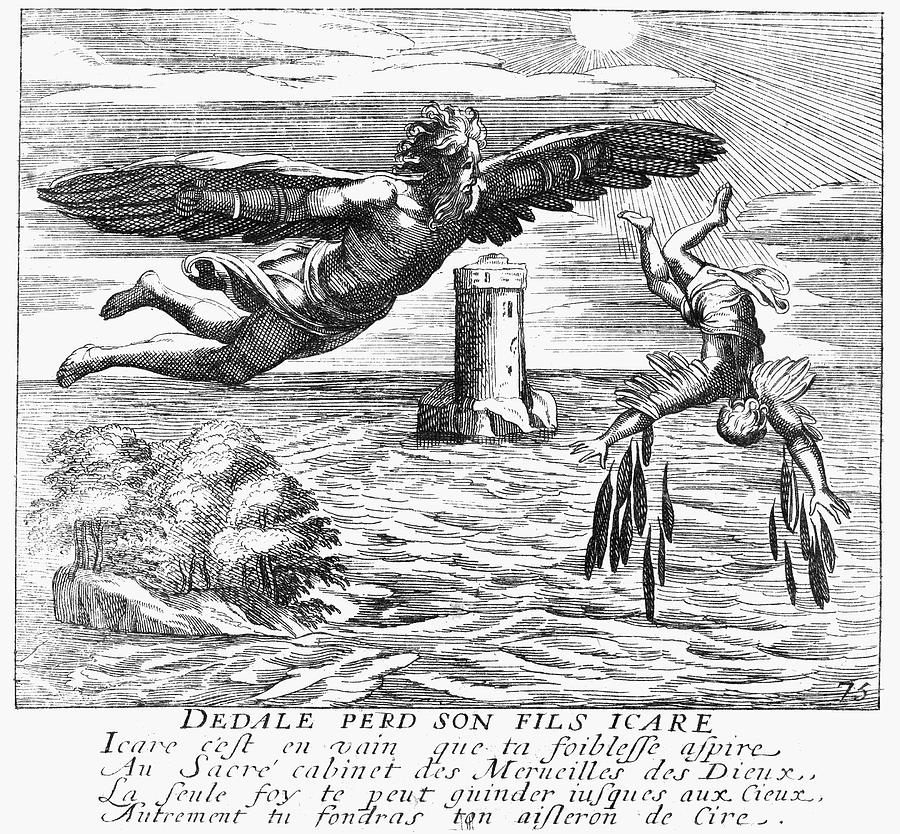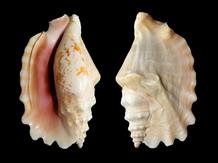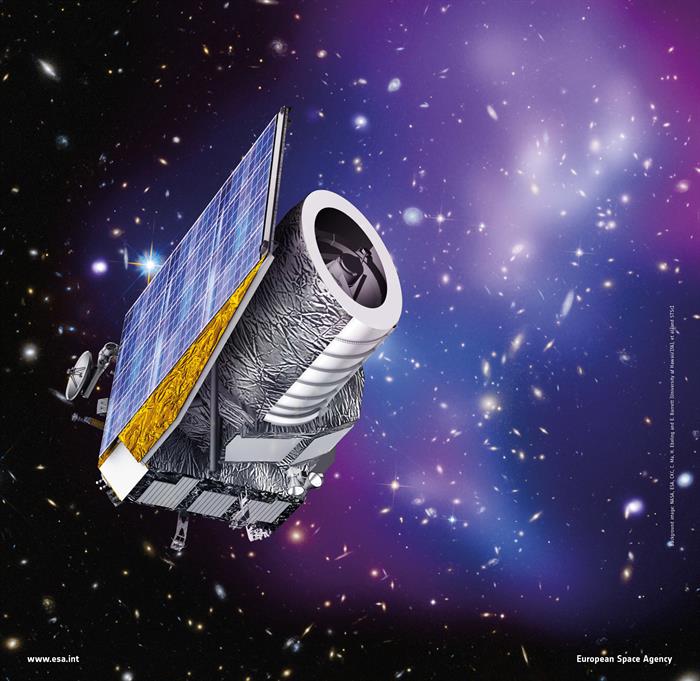DEDALE is an international and multidisciplinary European collaboration. The three year project aims to design novel techniques for analysing large and complicated data sets with specific applications in astrophysics and remote sensing, but the solutions developed could also be used in other domains, such as smart cities. The team is comprised of five partner institutes in four different countries: CEA1 (France), FORTH2 (Greece), UCL3 (UK), TUB4 (Germany) and Safran (France). Each partner brings diverse expertise to the project in fields such as signal processing, machine learning, mathematics and cosmology.
Only one year into the project, members of DEDALE have shown that galaxy images can be better recovered from distorted observations using new mathematical tools. These tools are not limited to the domains of astrophysics, they can also be applied to problems such as the using images from drones to detect forest fires.

Engraving of Daedalus losing his son Icarus © All rights restricted
Finding solutions to escape the data maze
DEDALE stands for “Data Learning on Manifolds and Future Challenges”, but is more genuinely a reference to Daedalus (‘Dédale’ in French), the mythological Greek inventor. Once, Daedalus was presented with the challenge of running a length of string throughout a spiral shell. To do so, he tied the string to an ant and placed some honey at the end of the shell. The ant enticed by the smell of the honey pulled the string through the shell.
This story encompasses some similar concepts to the objectives of the DEDALE project. I
n the story Daedalus uses a novel method (the ant)  for learning a complicated manifold (the spiral shell). The DEDALE team are investigating ways to use machine learning techniques to find new representations for big data sets and in some cases to learn the manifold (i.e. the geometrical space like the surface of the Earth or a cube) on which the data lies.
for learning a complicated manifold (the spiral shell). The DEDALE team are investigating ways to use machine learning techniques to find new representations for big data sets and in some cases to learn the manifold (i.e. the geometrical space like the surface of the Earth or a cube) on which the data lies.
An example of conch shell © George Chernilevsky
From DEDALE to mapping the dark Universe

An artist view of the Euclid Satellite © ESA
A specific example of where DEDALE tools can be implemented is the upcoming ESA-lead Euclid mission. This space telescope is planned for launch in 2020 and aims to study dark matter and dark energy by measuring the shapes of billions of galaxies to unprecedented accuracy. One key factor that will determine the success of the mission is the ability to remove the blurring introduced by the instruments in order to get reliable measurements of the galaxy shapes. This presents a big data challenge as each image of the sky will contain thousands of galaxies and various sources of noise. Indeed, it is planned that this cartography of galaxies will produce around 150
petabytes5 of data! That is why DEDALE members have developed a new method of noise and blur removal using a mathematical tool called nuclear norm regularisation. This method exploits the fact that many of these galaxies have similar properties, such as size and shape, all of which lie on a given manifold. Using this new technique, DEDALE members have been able to remove the noise and burring effects from thousands of Euclid-like galaxy images to greater precision than the current leading methods
(Figure below).

A reference galaxy image (first from left), the same image with blurring effects and noise similar to that expected from Euclid observations (second), the recovered image obtained using community standard techniques (third) and the recovered image obtained using the new method developed by DEDALE members (fourth). © Farrens et al
1 French Alternative Energies and Atomic Energy Commission
2 Foundation for Research and Technology - Hellas
3 University College London
4 Technische Universität Berlin
5 The petabyte is a multiple of the unit byte for digital information. A petabyte equates to 115 bytes.
This astrophysical application is only a beginning. Over the next two years the DEDALE project intends to provide a wealth of mathematical tools and software that can be applied to a variety of problems involving large and complicated data sets.
About DEDALE :
 | Thanks to the Horizon 2020 Future Emerging Technologies programme, a very highly selective H2020 call – 3.7 % success rate in 2015 –, the DEDALE project has been granted a budget of 2.7 million € from Oct. 2015 until to Oct. 2018.
|